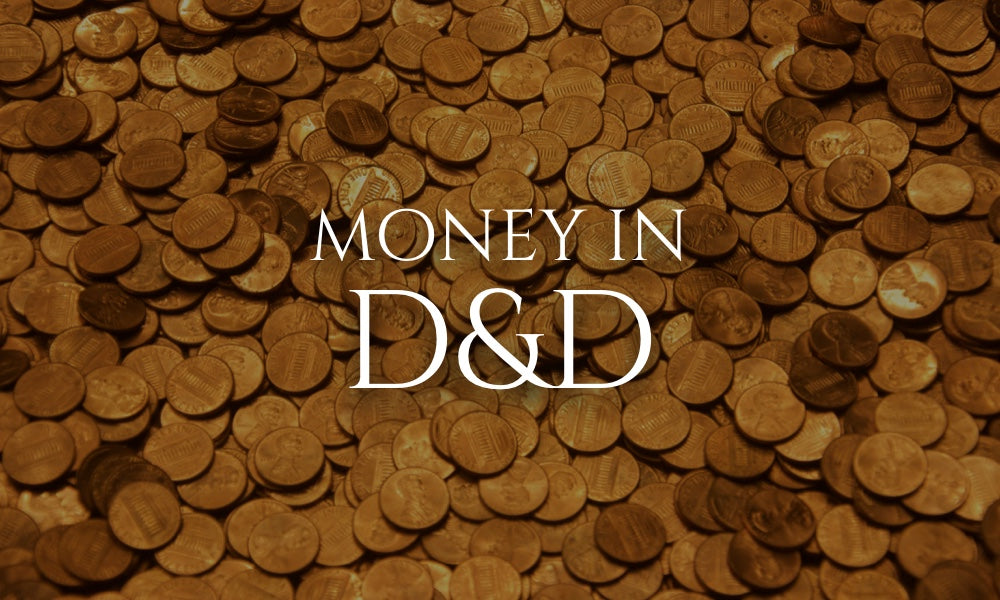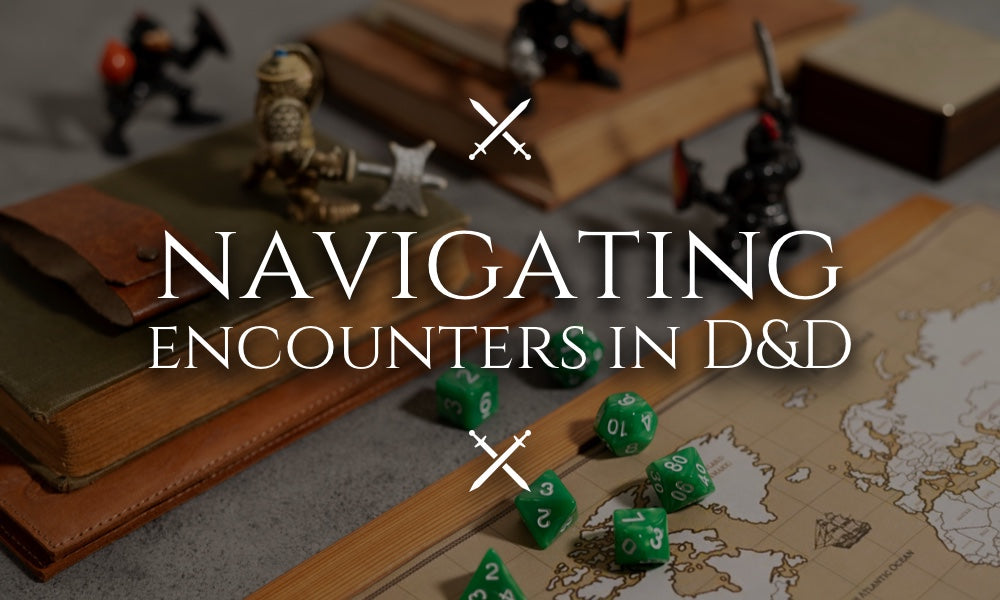
Money in D&D: How It Works
In Dungeons and Dragons, money comes in the form of metal coins.
The four most common are copper pieces (cp), silver pieces (sp), electrum pieces (ep), gold pieces (gp), and platinum pieces (pp). Other denominations exist, but they’re used less commonly.
Gold pieces (gp) are the coin which adventurers will use most commonly. A gold piece can buy a spear, 50 ft. of rope, 20 arrows, two days of trail rations, or a goat. A skilled artisan can earn roughly a gold piece for a day’s work.
Gold pieces are the standard measure for wealth and for the cost of items, and items available for sale are listed in rulebooks with their cost listed in gold pieces unless the item costs less than a gold piece. NPCs you encounter do most of their business in smaller denominations because most day-to-day goods like food and clothes cost less than a gold piece, but merchants typically discuss trades and large exchanges in gold pieces.
Coins and Their Values
- Copper piece (CP) is the smallest common denomination.
- A silver piece (SP) is worth 10 copper pieces.
- A gold piece (GP) is worth 10 silver pieces.
- A platinum piece (PP) is worth 10 gold pieces.
One gold piece is worth 10 silver pieces (sp). Silver pieces are the most common denomination used for day-to-day trade between commoners. A single silver piece buys the work of an unskilled labourer for a day, a flask of lamp oil, a club, or a stay at a cheap inn.
One silver piece is worth 10 copper pieces, which are the smallest denomination of currency. They are commonly traded among unskilled labourers, beggars, and other poor people. A single copper can buy a candle, a torch, or a piece of chalk. Adventurers trade in copper pieces only rarely, typically using them to buy cheap items like torches which they often need in large quantities.
Two other denominations of coin also exist, but are very rarely used. Platinum pieces (pp) are worth 10 gold pieces. They’re too valuable to be used by common folk, but they’re great for transporting large quantities of money, and for adventurers who commonly carry large amounts of coin in their travels, they are a useful asset. The fifth and least common form of coin are electrum pieces (ep), worth 5 silver pieces each. Electrum pieces are frustrating to use due to their unusual value.
50 coins of any denomination weigh roughly one pound, and coins are roughly the size of a real-world U.S. quarter. People who are good at math and know how much metal weighs will notice immediately that this doesn’t make real-world sense, so if this bothers you just imagine that the coins are alloys of some sort.
A Different Way of Notating Currency:
It’s also easy to compare D&D coins to real-world U.S. currency. A gold piece is a dollar, a silver piece is a dime, and a copper piece is a penny.
- Copper piece (CP): 0.01
- Silver piece (SP): 0.10
- Gold piece (GP): 1.00
- Platinum piece (PP): 10.00
Adventurers can acquire coins either through honest means, such as working a job or selling loot from defeated monsters, or through dishonest means, such as robbing innocent people or looting dungeons. Monsters can have coins on them, depending on their intelligence and the extent of their hoard. Generally speaking, a monster’s hoard will contain a few hundred copper pieces, a few dozen silver pieces, and a few electrum or gold pieces.
Dragons, however, can have hoards of several thousand coins.
Tracking coins is an important part of playing Dungeons and Dragons. Players should keep track of how much money they have and what they’re spending it on. Players can also use a variety of mobile apps that can help track their coins and keep them organised. For our breakdown of the best ways to track your riches, follow this link.
Keeping a close eye on your money can help you stay ahead of the game and prevent you from spending too much money in one place.

